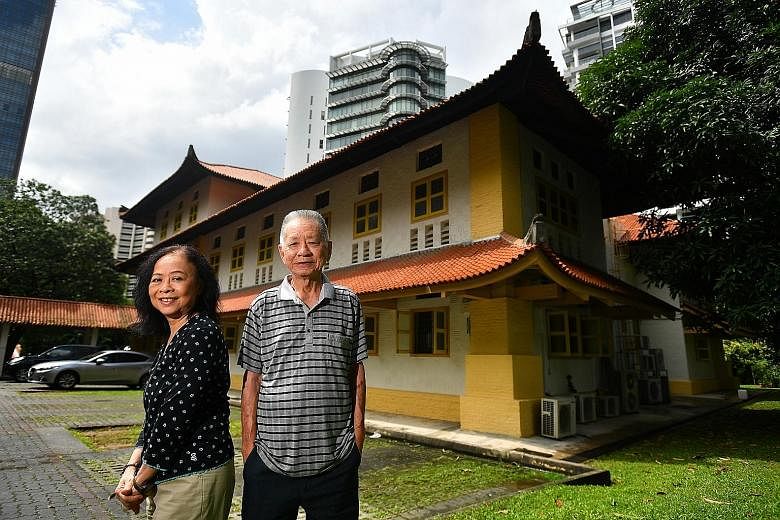Many structures designed by colonial architectural firm Swan and Maclaren have been protected by law, such as Raffles Hotel and the former Tanjong Pagar Railway Station.
But one of its creations - built in 1925 on a little hill in Orchard Road - seems to have been forgotten.
Originally built for Anglo-Chinese School (ACS), it has been overshadowed and obscured by a stretch of Art Deco-style terraced houses which were gazetted in 1989.
Now an arts venue, One-Two-Six Cairnhill Arts Centre, its five tenants are seeking to have the state-owned building gazetted for conservation.
Since few people know about the place, their first step is to drum up awareness about its existence.
Cultural Medallion recipient Angela Liong, the artistic director of contemporary dance company Arts Fission, initiated the conservation bid. She described the building as the "last oasis and a historic structure in an area dominated by high-rise condominiums".
Some tenants are planning to conduct open house activities, including a garden party in July, to open up the venue to more people. There are also plans for arts performances and activities to highlight the building's architectural and human stories.
Said Ms Liong: "The centre is truly a tranquil, secret garden in the midst of the busy urban centre that is Orchard Road. Set on a hill, the site attracts hornbills and songbirds.
" It would be a pity if development one day swings in. We never want this centre to be in jeopardy and that's why all of us are hoping it will be gazetted."
Designed in a "semi-Chinese style" and featuring upturned eaves and geometrical motifs on its surfaces, 126 Cairnhill Road was occupied by ACS from 1928 until 1949, before other institutions, such as the Vocational Instructor Training Centre and headquarters of the Adult Education Board, moved in.
After refurbishment works, it was reopened in 1993 by then Minister for Information and the Arts George Yeo as an arts centre. He described it as "another gem" in Singapore's cultural crown.
Ms Dalifah Shahril, president of the centre's management committee and manager of Teater Kami, said all her fellow tenants support the building's conservation.
This effort follows a series of campaigns to protect Singapore's built heritage. A similar effort was launched by tenants of the 1930s-built The Quadrant, a former bank in Cecil Street, last year. A decision has yet to be made.
Ground-up efforts to conserve buildings are usually led by owners of private buildings under the Urban Redevelopment Authority's (URA) voluntary conservation scheme.
The URA said the merits of conserving 126 Cairnhill Road will be studied as part of larger plans for the area, adding that the site is not affected by any immediate development plans.
Records show the building was officially opened by Sir Hayes Marriott, the officer administering the government, on Nov 17, 1928, and that boys from Standard 6 upwards moved into the "fine, airy building" that was home to the secondary classes until 1949.
It also holds memories for retired teacher Adrian Lim, who was eight when he studied there for a year in 1946 while his school - Monk's Hill Primary - was being repaired after the Japanese Occupation.
He returned to the same classroom as a trainee teacher in 1958 after ACS relocated to Barker Road and the building was used as the Teacher's Training College.
Mr Lim, 80, said: "It is a special place. The room where I had first started school after the war was... where I had lectures to become a teacher.
"There was a Chinese look to the building although it was also quite modern."
Singapore Heritage Society vice-president Chua Ai Lin said: "This is a beautiful piece of early modern architecture in the distinctive vernacular Art Deco style. It's also been in continuous use as a place of education and the arts."


